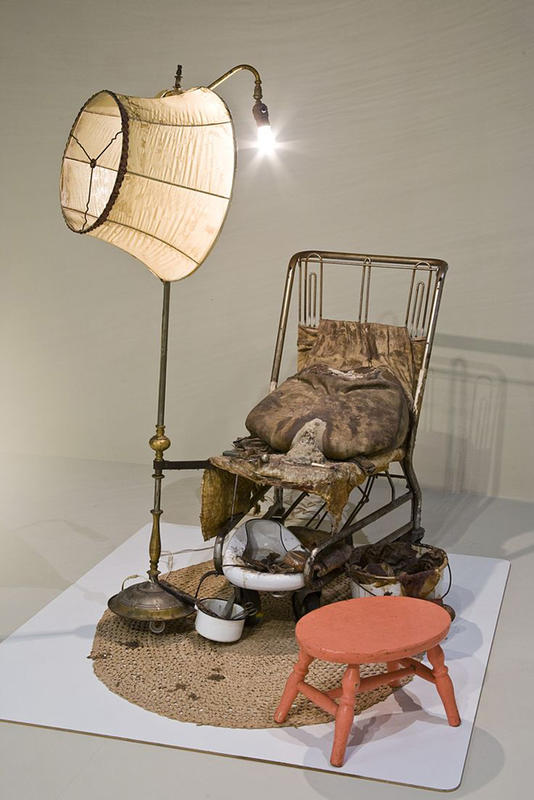More about The Illegal Operation

Contributor
Edward Kienholz never backed away from controversial issues or illegal operations.
This gritty depiction of a backstreet abortion was inspired by the experience of Kienholz‘s wife’s procedure when it was still illegal. It wasn’t until the Supreme Court’s momentous Roe v. Wade decision in 1971 legalizing abortion that women finally got access to safe medical care. We won’t mention that 40 years later, much of the freedom of women’s health care has been eroded, and women are again faced with restrictive options.
The buckets, bedpan, dirty instruments, and blood-soaked rags say it all. A shopping cart cut in half becomes the operating table; a cement bag resembling a sagging body spills its innards. Kienholz the social critic spared nothing. Didactic yes, subtle not so much. Conventional “prettiness” was not his thing.
Soon after this sculpture was created, Beverly Hills clothing retailers, Monte and Betty Factor, purchased it with a little cash, an old boat, and some clothes. They put the sculpture in their dressing room where they could see it every time they went to the bathroom. Monte felt it was the most moving work of art he had ever seen. Betty declared, in an understatement, “It was the extreme underside of beauty." No kidding.
In need of a little cash when he turned 91, Monte offered to sell the piece to the Los Angeles County Museum of Art. Although 46 years had passed since its creation, the subject was still controversial. The museum director, realizing there might be some blowback if LACMA purchased the piece, wisely solicited a group of 16 donors who pooled their money together to purchase this seminal, if politically charged, sculpture.











